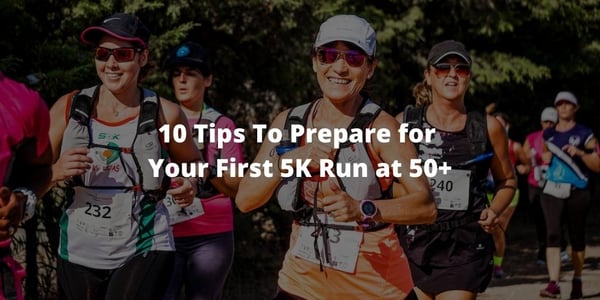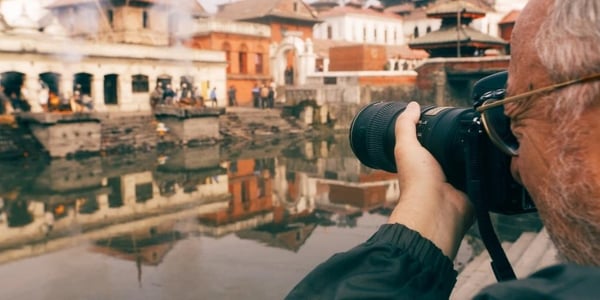A key aspect of maintaining a healthy lifestyle is incorporating regular physical activity and...
8 Hiking Safety Tips for 50+ Adults
Hiking is a fantastic way for older adults to stay active, enjoy the great outdoors, and improve their physical and mental wellbeing. However, hiking can also present certain risks and challenges, especially for those who are not used to it or who may have age-related health concerns. That's why it's important for older adults to take some extra precautions and plan ahead before hitting the trails. In this blog post, we'll share eight hiking safety tips specifically tailored for older adults, so they can enjoy their hiking experience to the fullest while staying safe and healthy. Whether you're a seasoned hiker or a beginner, these tips will help you stay on the right track and make the most of your time in nature.
Tips for a Safe Hike
-
Bring Plenty of Water
Most of us often don't realize the importance of water during a hike, and we bring small water bottles that are finished halfway through the hike. However, it is crucial to bring enough water to last you throughout the hike. Keep additional water in your bag and use it whenever you feel tired or thirsty.
Keep a bottle of at least one to two liters in your bag. It is enough water to last you throughout the hike and give you the strength you need to continue. You can also keep a small sports drink like Gatorade if you are sweating and need to replenish electrolytes.
-
Dress Appropriately
.jpg?width=300&name=pexels-amanda-linn-1058057%20(1).jpg) A necessary preparation step for your hike is to check the weather and other conditions before embarking on your journey. Then, choose the right outfit that will be comfortable to ensure you can complete the hike without any hassle. It is best to wear light and breathable clothing during the summertime, so you don't overheat.
A necessary preparation step for your hike is to check the weather and other conditions before embarking on your journey. Then, choose the right outfit that will be comfortable to ensure you can complete the hike without any hassle. It is best to wear light and breathable clothing during the summertime, so you don't overheat.On the other hand, the winter calls for warm hiking clothing that will help protect you from the cold and wet conditions. Once you dress for the appropriate weather and conditions, your hike will be safer and more comfortable.
Regardless of the season, be sure to wear quality footwear! The trails can be rough and it's important to have sturdy shoes or boots to protect your feet and ankles. -
Consult A Doctor First
As we age, we face an increasing number of potential health problems. Therefore, you should always consult your doctor before deciding to go on a hike or start a new exercise routine. Your doctor will assess your health, joints, heart, muscles, and more to let you know if you are fit enough to go on a hike. It's better to understand your risks and limitations than to get stuck halfway up a hill or mountain.
-
Start Small
Even if your doctor gives you the green light, you should still test yourself by taking a short hike first. A hike that isn't too steep and does not last long will give you a better idea of your health, physical fitness, and flexibility. Once you understand this, you can determine whether your body is ready for a more challenging hiking trail.
There are many short hikes available in every region. Do your research, and you will find many short hiking trails in no time with a quick Google search. Or walk around your neighborhood or even on a treadmill to better gauge your abilities.
-
Bring a Walking Stick
Hiking trails are full of uneven terrain, rocks, roots, and tripping hazards. Not to mention, the risks are high because a fall can also mean tumbling down a hill or landing on a sharp stick or rock. As a result, keeping your balance while hiking is critical. One way to help maintain your balance is carrying a walking stick. A walking stick gives you a third point of contact with the ground, making it easier to catch yourself and prevent falls. It also gives you a good way to push off the ground, reducing strain on your legs when walking up and down hills.
-
Go Slow And Take Breaks
%20(1).jpg?width=300&name=pexels-magda-ehlers-1307391%20(1)%20(1).jpg) Many beginners make the mistake of going too fast during a hike. They don't realize that going at too fast of a pace will tire them out, and they will not have enough energy for the entire hike. Sometimes, it might not even feel fast. However, it's important to remember that hiking is about endurance, and it's better to go slow and conserve energy you might need later. That is why the key is to go slow and take breaks as you go along the hiking trail.
Many beginners make the mistake of going too fast during a hike. They don't realize that going at too fast of a pace will tire them out, and they will not have enough energy for the entire hike. Sometimes, it might not even feel fast. However, it's important to remember that hiking is about endurance, and it's better to go slow and conserve energy you might need later. That is why the key is to go slow and take breaks as you go along the hiking trail.Take small steps and go at your own pace because only you know what your body is capable of. Once you understand this, you will figure out the ideal pace that will allow you to successfully complete the hike. Be sure to rest and take breaks because you don't want to overexert your muscles.
If you don't stop when you need to, your joints will have a hard time once you are back from the hike. That is why it is important to go slow and take as many breaks as you like to complete the hike in the best way for yourself.
-
Take Your Phone
It is not difficult to get lost on a hiking trail, especially if you have never been on it before. Many hiking trails have multiple ways to get to the top. However, sometimes those ways are not ideal and can lead you somewhere else altogether.
That is why you must take your phone with you and ensure it is fully charged before you leave for the hike. You will need to call someone in case of any emergency or if you are lost during the hike. Your phone can also be helpful to use for GPS if you are lost.
-
Bring a Map
Another hiking safety tip is to take your map with you, as you will need it to figure out the trail. Most trails already have signs and other things to help you find your way. However, you must still exercise all safety measures to ensure you stay safe throughout the hike.
So, be sure to get a map of the trail and keep it with you at all times. Then, anytime you feel lost, you can take out the map and find your way in the right direction. Even if you plan to use your phone for mapping, it's a good idea to have a printed copy. Your phone could get lost, broken, run out of battery, or lose connection. In these cases, it is best to have a full-sized hard copy of the map in case of an emergency.
Hiking can be challenging on the body and the mind. That is why it is important to go with preparation so you can conquer the hiking trail without problems. Once you do, you will love the exercise, and you'll look forward to the next hike.






